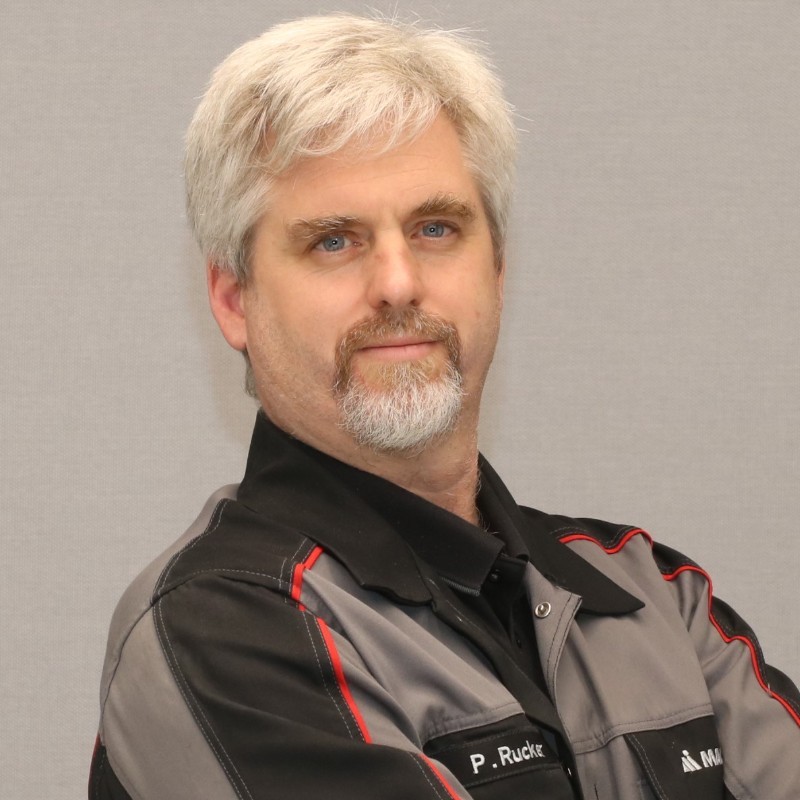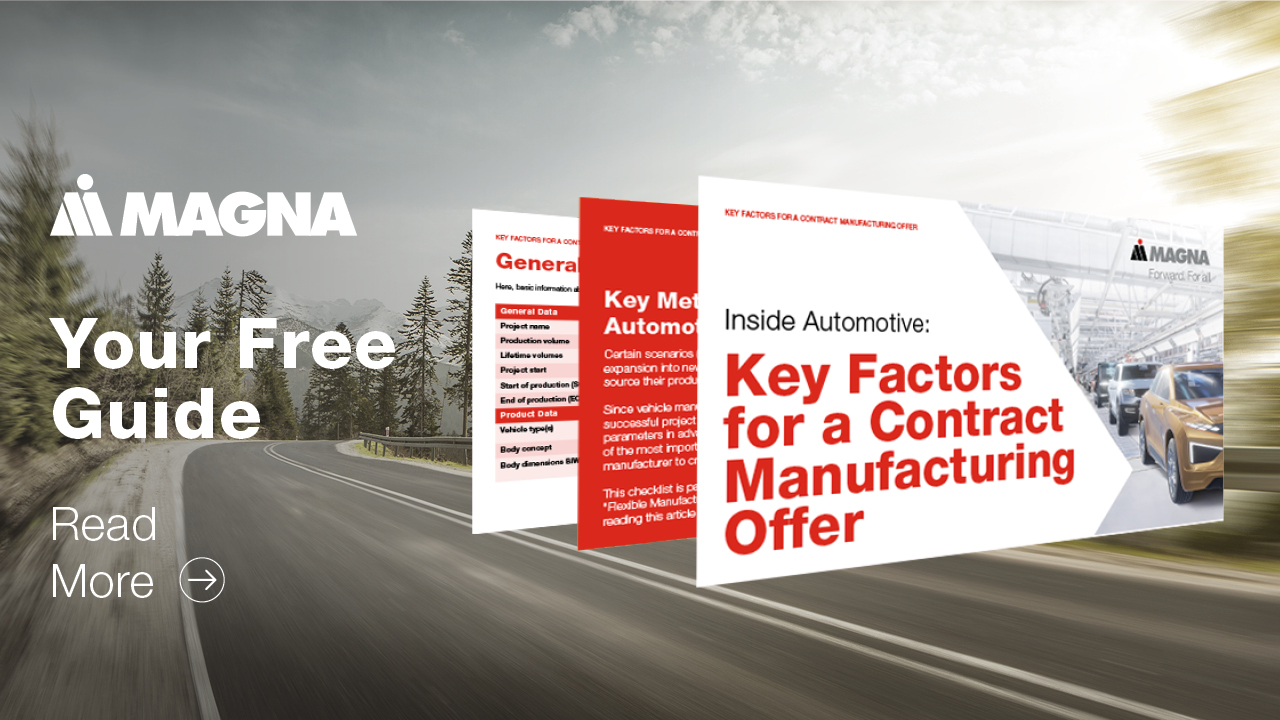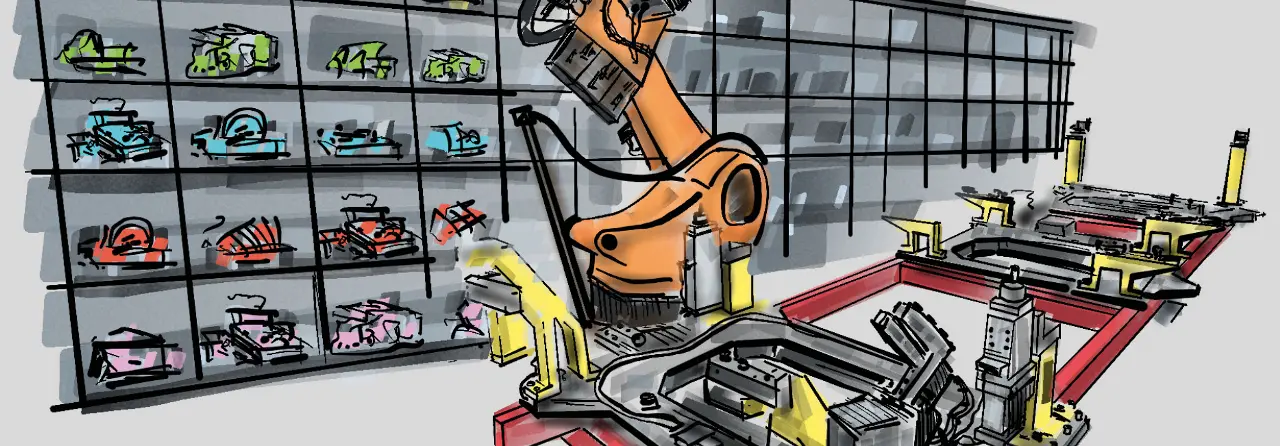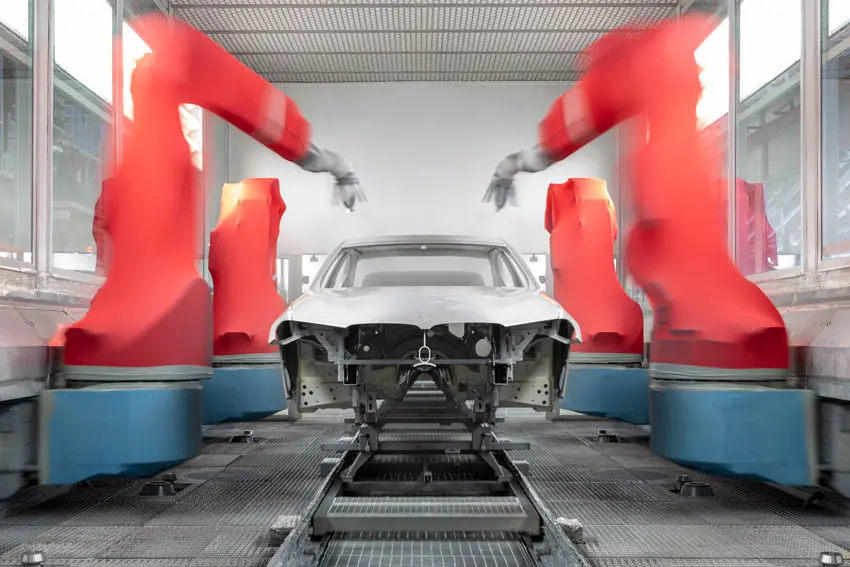SEPARATED AND CONNECTED: THE MARRIAGE OF BODY AND POWERTRAIN
One core process in automotive assembly is marriage – between powertrain and car body, that is. Depending on the type of powertrain, this production step is performed differently; and depending on the manufacturer, there are different philosophies that need to be brought together.
In multi-OEM manufacturing, the principle of “sharing what’s possible – separating what’s necessary” is applied. To be as flexible as possible, the pre-assembled axle for each type of drive, for example, is carried out directly upstream of the marriage. Core processes, such as joining the drivetrain and car body, and bolting are carried out in the automated marriage. Depending on the battery concept, the vehicle battery is also joined during marriage – or on a different station, if needed.
In principle, assembling vehicles with different base architecture would even be possible on one line – for example body-on-frame vehicles or vehicles with self-supporting bodies. Naturally, there are some limitations as defined by the box dimensions, which determine the compatibility of length, width, height, weight, and pick-up points. However, with this combination specifically, the economic aspect needs even more consideration.
MODULARITY ENABLES JOINT ASSEMBLING DESPITE DIFFERENT PRODUCTION DEPTHS
If the different vehicles on one assembly line possess different production depths, spreading can occur. The different assembling dimensions cause different required work times – and the economic feasibility sinks.
But this challenge can be resolved, too. The solution is a modular assembling process. The assembly halls of Magna in Graz allow for different pre-assembly options close to the line for all vehicle types with higher production depth. This way, the extra operations don’t disrupt the workflow at the assembly line.
Conversely, it is also logistically possible to deliver pre-assembled modules to the line. Depending on economic feasibility and customer specifications, both options can be displayed on the same line to reduce work time spreading as much as possible.
ENSURING CAPACITY UTILIZATION OF THE PRODUCTION LINE DESPITE FLUCTUATIONS IN THE NUMBER OF UNITS
It is of course entirely within the scope of possibilities that sales for a specific vehicle model develop differently from the prediction – and that production needs to the adapted. Depending on the constellation for volume development, a joint assembling of different vehicle models on one line can also provide benefits. If a new model performs better on the market than planned, volume flexibility is a decisive advantage in scaling.
Such volume changes may provide a challenge for workforce and machinery – but it is possible to adapt the production program flexibly and short-term regardless, and subsequently even out volume fluctuations of individual models. If the volumes fluctuations affect the entire industry branch, however, they are amplified for several products on one line – in both a positive and negative sense.
Magna’s multi-OEM assembling does, however, grant one major advantage in such a case, since it is possible to integrate additional products into the line at short notice and with reduced investment during normal production downtimes (such as plant vacations). Thus, achieving additional volume and better capacity utilization can be achieved.
A QUALIFIED WORKFORCE IS REQUIRED FOR FLEXIBLE MULIT-OEM-PRODUCTION
Multi-OEM assembling of different vehicle types on one line requires that more diverse and complex working steps are executed for each vehicle, as different cars need different materials and processes and thereby different working steps. In addition, multiple requirements and quality demands need to be considered.
As such, the qualification of the workforce is a particularly important asset for multi-OEM assembly. Therefore, Magna puts great emphasis on providing adequate training and instructions.
Entry of new employees is facilitated by educating them on basic working techniques before they are deployed on the line. The aim is to slowly introduce them to the products and gradually entrust them with further tasks.
THE DIGITAL VEHICLE: FLASHING AND EOL-TESTING OF DIFFERENT E/E PLATFORMS
From a purely mechanical standpoint, assembling different vehicle types – or different vehicle derivates at least – is by now a solved issue. It has become increasingly common in OEM production sites as well, although Magna still possesses a leading position due to its decades-long experience as a multi-OEM manufacturer.
With increasing integration of new, digital, software-based vehicle functions, in-car flashing of data storage – i.e., installing the latest software versions grows ever more relevant. Programming of control units starts very early in the assembly process and continues right until the EOL stage.
Here, Magna works hand in hand with the OEM and their process requirements. Thanks to our flexible and expandable testing technology, different E/E systems of different customers can be realized on one line. It is also possible to develop and offer complete vehicle software solutions for customers without prerequisites – so-called new entrants.
These core competencies give Magna a unique position as a contract manufacturer. Whether shorter model cycles, higher derivative numbers, smaller vehicle volumes, or the continually rising importance of software-defined vehicles – in Graz, we are looking forward to the challenges of the future.





